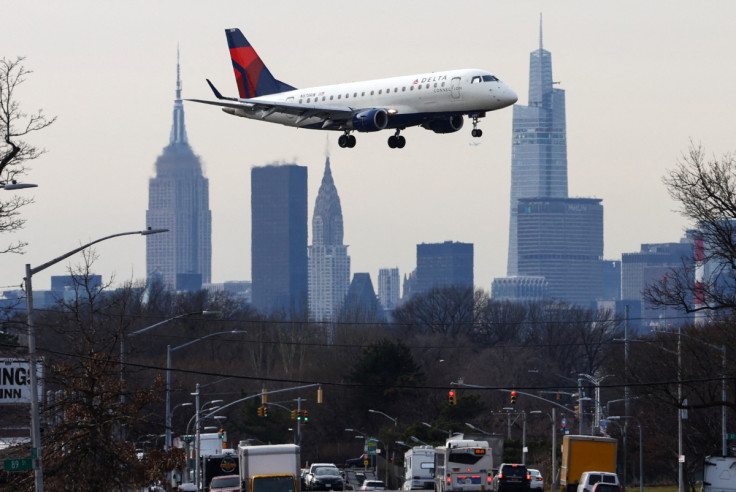FAA Issues Safety Alert To Airlines After Risky Flight Incidents: What Are The Recommendations?
KEY POINTS
- Six serious runway incursions have occurred since January
- FAA says the "potential severity of these events is concerning"
- The agency emphasized the need for continuous changes in safety practices
The Federal Aviation Administration (FAA) has issued a safety alert for airlines, pilots and other stakeholders in order to enhance vigilance and mitigate safety risks after a series of high-profile near collisions and flight delays.
The agency, in a statement Wednesday, acknowledged that a number of high-visibility events have occurred in the National Airspace System (NAS) and the "potential severity of these events is concerning," USA Today reported.
Since January, there have been at least six serious runway incursions, including a near collision of a FedEx landing plane as it came within 100 feet of a departing Southwest Airlines passenger jet at Austin-Bergstrom International Airport in Texas and another incident involving an American Airlines plane at New York's John F. Kennedy Airport. The National Transportation Safety Board (NTSB) is investigating these serious close calls.
JetBlue and Learjet flights had a "close call" at Boston's Logan Airport earlier this month. The JetBlue pilot had to take "evasive action" to avoid a potential collision.
In its memo to airlines and aviation industry stakeholders, the FAA stressed the need to incorporate continuous changes in safety management to "detect emerging safety issues, assess the level of risk and address the risks through mitigations."
"Operators should evaluate information collected through their safety management processes, identify hazards, increase and improve safety communications with employees and enact mitigations," it noted.
FAA's latest safety recommendations
The agency recommends various measures to avoid catastrophe as travel demand continues to spike:
- Use all internal communication processes to highlight recent events and existing issues.
- Strictly follow published processes and procedures, including checklists, Air Traffic Control instructions and internal company procedures.
- Ensure pilots and flight attendants have the same understanding of what "sterile flight deck" means and the risks associated with extraneous communication during this time. The sterile flight deck rule restricts crew members from taking up non-essential duties or activities during busy phases of flight like take off, initial climb and landing.
- Emphasize the importance of awareness of the aircraft in relation to taxiways, runways and other aircraft.
- Encourage crews to diligently follow Crew Resource Management (CRM) procedures and principles to control the workload and reduce distractions.
- Encourage personnel to identify and report existing and emerging safety issues through voluntary reporting programs.
- Safety management systems should account for a high rate of change.
Amid a surge in near-miss incidents, Secretary of Transportation Pete Buttigieg called on the industry stakeholders to find their "root causes."
"We are particularly concerned because we have seen an uptick in serious close calls," Buttigieg said at a safety summit held in Washington on March 15.
At the meeting, FAA acting administrator Billy Nolen said aviation was "amazingly safe," while emphasizing the need for more vigilance.
"We must ask ourselves difficult and sometimes uncomfortable questions, even when we are confident that the system is sound," Nolen noted.
Last year, a total of 1,732 runway incursions were reported in the country, according to FAA data.

© Copyright IBTimes 2024. All rights reserved.





















